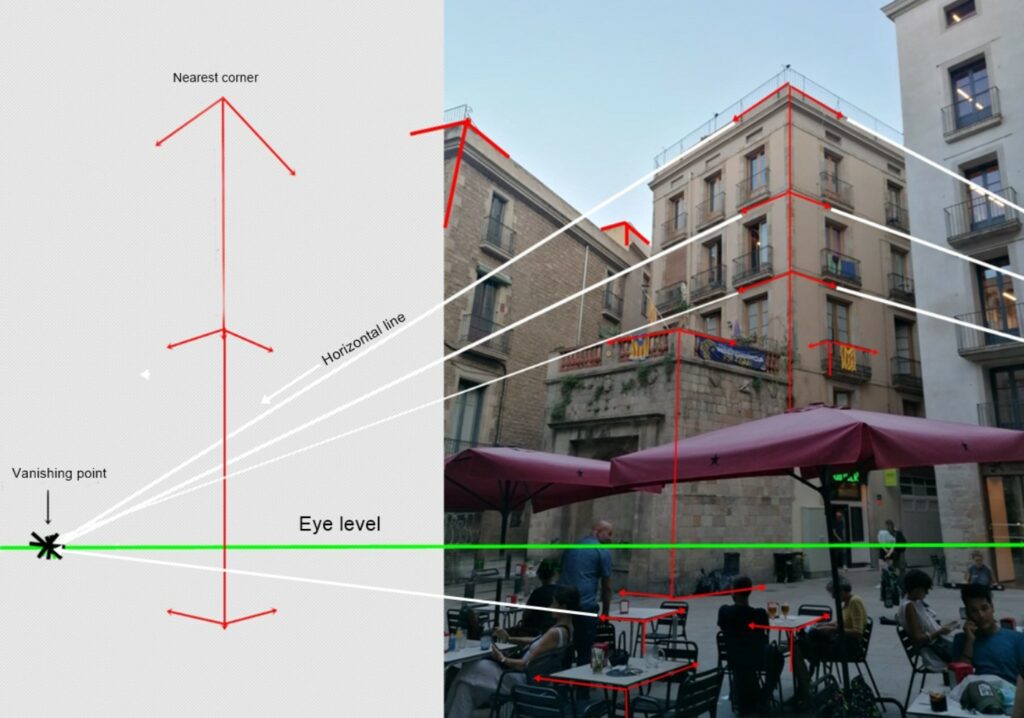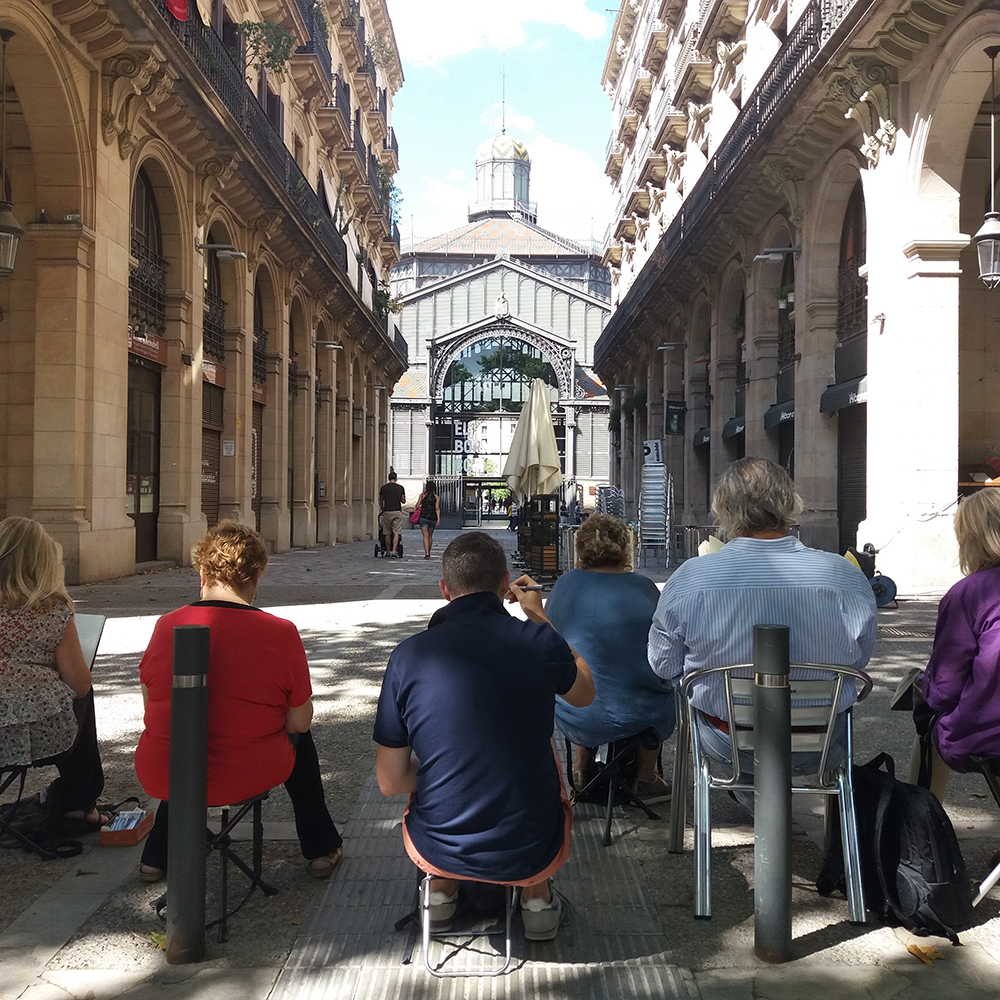“Easy” perspective.
When we approach perspective, during my lessons, how many times have I heard my students say: “How difficult”… “I don’t dare to draw perspective” “I will never learn”…. I will never make it !…
And you have to think positively. Perspective may seem difficult, but it has a few basic rules, and if you follow them, you will be able to get your drawing to stand 80% upright.
To begin, you must learn to observe.
By observing, and respecting a few rules, you will see that without building all the boring construction lines which take away spontaneity and freshness from your drawing (the horizon line, all the horizontal lines which converge towards the famous point of vanishing, the vanishing point itself… which moreover 90% of the time is not found in our drawing), you will have understood the perspective.
Let’s get started!
RULE 1: Learn to place the Eye Level (EL)
The Eye Level is an imaginary line that is at the level of your eyes, and you can find it by looking carefully, when you look straight ahead, without looking up or down. This is the height of your eyes, and it situates you in your drawing. Of course, you will not have the same perspective if you draw sitting in the middle of the street as if you draw from a terrace on the sixth floor of a building.
RULE 2: Always start your drawing at the angle or edge closest to you, of what you want to draw. If you observe, you will see that a building has a nearest corner or edge, a balcony too, or a window. In the case of a chair, this will then be the leg of the chair closest to you, or the angle of the back.
Then, before you start drawing, ask yourself if what you want to draw is located “above” the famous Eye Level (EL), remember that it is the height of your eyes, or “ below » the EL.
As you can see in the photo, above the EL, starting from the angle closest to what you want to draw, the horizontal lines go down towards the Eye Level.
Below the EL, the horizontal lines rise toward the EL.
All these horizontal lines converge towards the same vanishing point, located on the Eye Level.
But when you’re drawing on the street, this vanishing point is almost never on your page.

As you can see in the photo, above the EL, starting from the corner closest to what you are going to draw, the horizontal lines go down towards the Eye Level.
Below the EL, or your eyes, from this same nearest corner, the horizontal lines go up towards the Eye Level.
All these horizontal lines converge towards the same vanishing point, located (always) above the Eye Level.
But when you’re drawing on the street, that vanishing point almost never fits on your sheet.
Now, it is your turn
You don’t have to go very far to find an interesting prospect. At home, you can draw your living room, a hallway with doors, furniture, a room.
Apply the same rules as on the street and go for it!
By practicing, you will understand, and this will help you progress.
